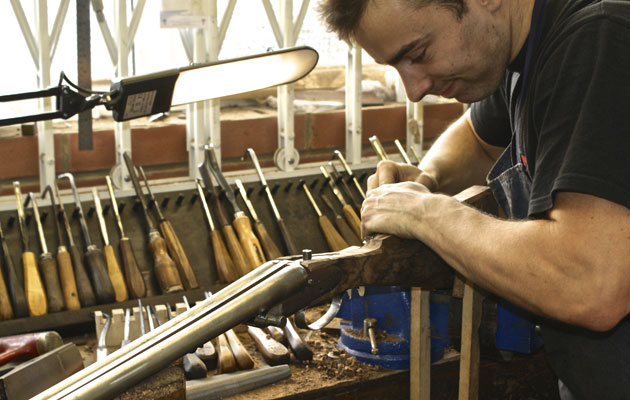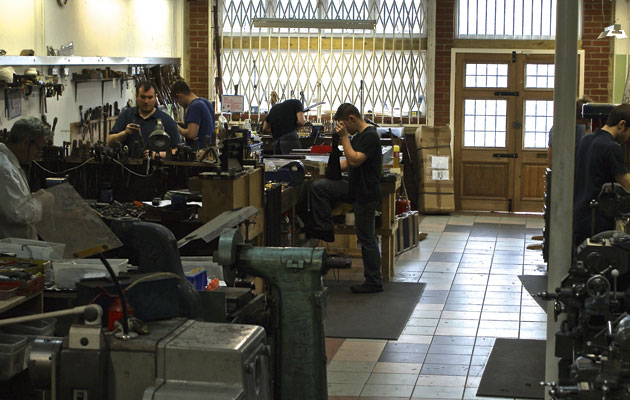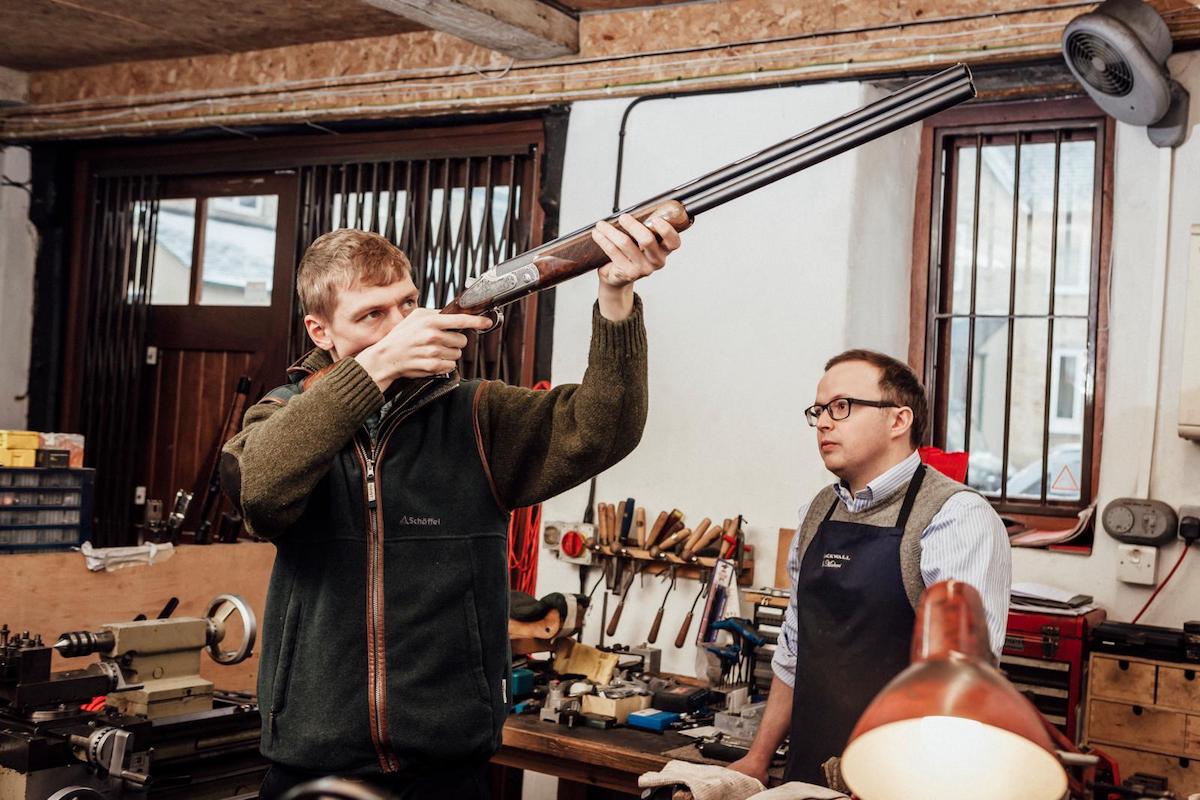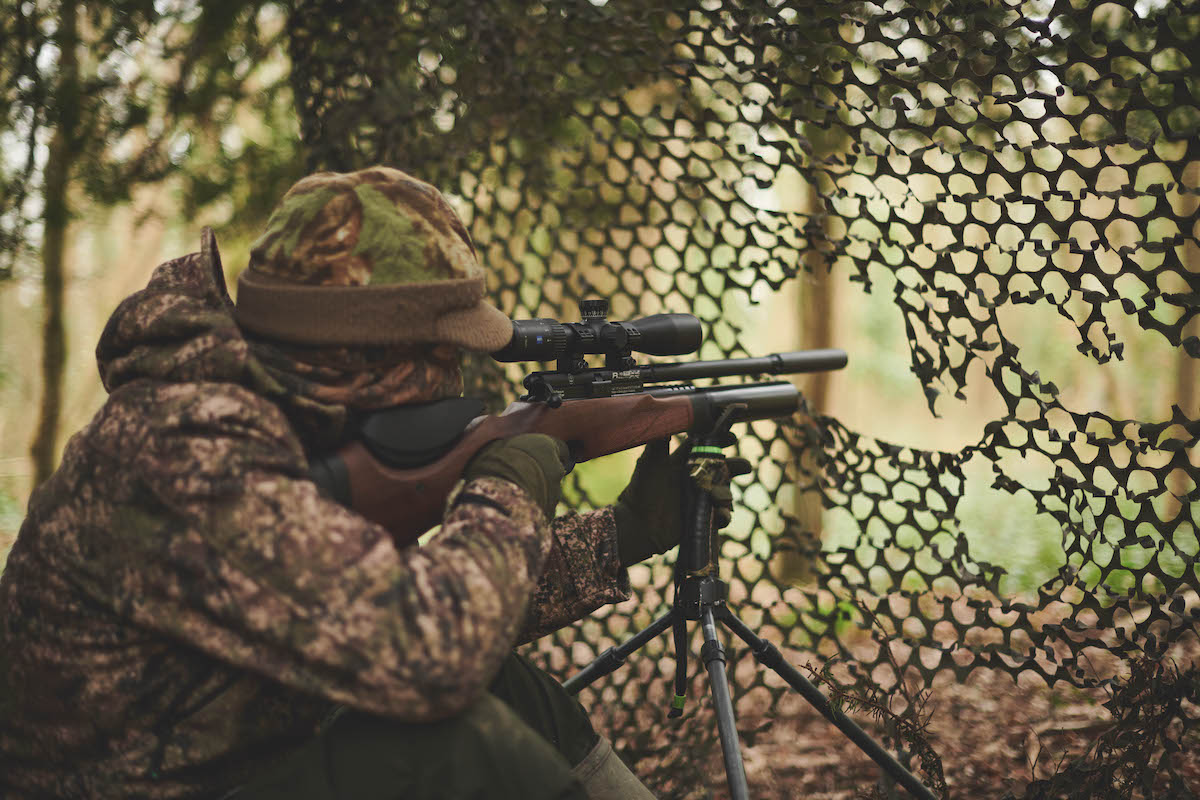Watson Bros four bore
Watson Bros' four bore is an example of the gunmaker's willingness to experiment. Caroline Roddis learns how Michael Louca and his team rise to a challenge.

It may come as a surprise to most Londoners that just a short walk from where tourists buy Chinese-made souvenirs of Tower Bridge is a place that epitomises old-fashioned British craftsmanship. Situated at the south end of Tower Bridge Road lies Watson Bros, an old gunmaking company given new life in 1989 and now renowned for being the first to produce an over-under at the same weight as a side-by-side, and for building lightweight, exhibition-grade modern guns grounded in tradition.
Demand for its guns has soared in the last four years and the company, formerly of Redchurch Street, relocated to these bigger premises in May. Not only does the extra room allow them to meet demand, it also gives them breathing space for new projects such as its spectacular four-bore shotgun. Visitors walk through Watson Bros’ door straight into the workshop, where it’s immediately clear that dedicated craftsmen are at work. There are no CNC machines, no pallets of imported parts, just men at benches making guns. It’s a sight to lift the heart: here’s a stock being carved, there’s someone filing pistol caps, here’s a young apprentice working on his own project, creating a knife out of Damascus steel just for the joy of seeing if he can.
Can’t resist a challenge
Michael Louca, the charismatic company owner, states that most of his customers seek out Watson Bros because they appreciate the quality of the designs and their craftsmanship. The new four-bore is a case in point: entirely designed and built by Michael and his team, with only the engraving outsourced (to ensure the customer gets the style they prefer), it is beautifully proportioned, with an elegance that belies its size. Its origins are similar to those of all the best ideas, taking root over drinks in the nearby George pub, which is famed for its association with Dickens. Here, client and friend Alan Brown challenged Michael to build a four-bore sidelock ejector, with a single trigger and 36” barrels, which weighed just 16lbs.
“Like an idiot, I said yes,” jokes Michael. Yet with decades of experience, and a history of building his own shotgun designs – including that revolutionary over-under action – his acceptance was grounded in confidence. “If you’re used to making a light gun you can really make a good heavy gun, but it doesn’t necessarily work the other way round. It’s also not just a case of enlarging a 12-bore – it’s not a mathematical equation.”
Gunmaker, not engineer
Michael looked at the work of other manufacturers for inspiration, but found there was nothing in existence that suited a modern gun. “The modern four-bores were far too industrial: they were too big in places, a lot of areas had excess metal left onunnecessarily,” he explains. “I think it’s a result of the way production has changed: when a gun’s designed on CAD it’s not designed by a gunmaker. I was approaching this project as a gunmaker wanting to manufacture a fine gun, not an engineer wanting to be a gunmaker.”
Michael points to the perfectly formed breech end of the four-bore, upon which there is not an ounce of spare metal, to demonstrate how a lifetime of gunmaking has given him a unique feel for the shape of a gun.
As with all his projects, Michael started the four-bore by working backwards from his client’s desired weight, drawing up the action and ejector, then determining how much the barrels should weigh. Due to a conflict between clients as to the ideal weight of a four-bore, Michael decided to make two models: “The first was a shorter 36” barrel gun weighing 16lb and firing a 3oz load, the second a 19lb version with 42” barrels firing 3½oz.” Thanks to his background in barrel-making, the guns ended up being within an ounce of the intended weight. “It’s 85 per cent skill, 15 per cent luck,” grins Michael.
Action, barrels, recoil…
With the designs complete, the Watson Bros team, now expanded to nine gunmakers in their new premises, got to work machining three actions, making more than necessary to ensure they spotted any errors Michael had made in the design process. Yet the company’s history precluded any problems. “When I built the over-under I designed my own ejector work,” says Michael, “and after two years of designing the gun I’d made so many mistakes along the way that I pre-empted them in the four-bore. The hardest part of design isn’t making the gun work, it’s making it reset – all the problems come at the recocking side of the gun.”
With the first action right on the money, it was time to tackle the barrels. Obtaining the correct size of tubes proved difficult, and it took more than two years for a specialist company to supply the 36” version. When it did, they proved to be more than 1lb too heavy on each side, meaning that Watson Bros’ talented barrel-maker Ryan had a lot of filing on his hands! This, coupled to the fact that the choke was far too long, meant they switched to Bruce Maskery, whose products met their exact specifications.
Now finished after two years’ development, the four-bores feature many hallmarks of Watson Bros’ other guns, including oil-finished stocks made from exhibition-grade wood, and the name Michael Louca engraved inside the action. Most of them are single trigger with a third grip, but double triggers and detachable locks are also available.
“As a finished gun it’s lovely to handle,” says Michael, who is himself a keen shot. “I won’t lie to you, they’re not recoil-less, but if the weight is right and the balance is correct then you won’t feel it. Once I got used to it I took it to the West London Shooting School and shot some clays – which was quite comical.” You can see Michael’s clay bashing for yourself on the Watson Bros website.
The sorcerer’s apprentices
An initial run of 12 four-bores have been made, with nine already snapped up by wildfowlers and collectors. Although Michael says he is very happy to have achieved his vision of creating a big-bore gun that is completely in proportion and, when you stand back, looks like a standard side-by-side, he is unsure as to whether more will be made. It is not that he lacks pride in his achievements, rather that he is keen to move on to new projects and fulfil the huge demand for his other guns, for which the expanded team is crucial. With the exception of Vincent, who came over from France two years ago, Michael has trained everyone at Watson Bros, using the same techniques he experienced as an apprentice at Purdey. “If I did something wrong I got shouted at, if I did something right I got a grunt,” says Michael.

Customers walk into the heart of the gunmaking operation as soon as they enter the Watson Bros premises.
“He doesn’t really shout,” says the smiling Hakan, who has been at Watson Bros just over a month. The apprentice bubbles with enthusiasm, because, as he explains, “that’s what you get from doing your dream job”. Apprentices go through a four-year process of learning and perfecting one individual skill before moving on to the next. Hakan has spent the past few weeks filing pistol caps, aiming to reduce completion time from seven hours to around two. It may sound tortuous, but it works: everyone in the team is an expert in their own area, with enough knowledge of the entire process to ensure everything flows smoothly.
It can, however, be difficult for people to adjust at first, as the Watson Bros lifestyle is uncompromising: hours are 8.30-5pm, with no exceptions; mobile telephones are not allowed and, if you want to listen to music, your only choice is the radio in the workshop because headphones are also banned.
The future’s bright
Yet the old-fashioned approach is paying off. The company’s traditional guns, particularly their ’50s-style pigeon guns – round-bodied, with a beavertail fore-end, third grip, side clips and a flat top rib – continue to increase in popularity. It’s not just that their price compares favourably to many major London gunmakers, or that their prices are all-inclusive, but the quality of the workmanship ensures that every gun is an advert.

The new Watson Bros four bores demonstrate all of Michael Louca’s gunmaking experience and creativity.
Michael’s new projects will undoubtedly also attract new audiences. Eight-bores are in the pipeline, and the first of its sidelock hammer guns has just been proofed, which enters life with sets of both steel and Damascus barrels and can in future be made with a variety of trigger and cocking options.
Ask him about the one-off showpiece gun he plans to make before he retires, however, and Michael will show you the beginnings of his 20-bore side-by-side-by-side. A testament to his design skills, it follows the same aesthetic principle as the four-bore. “If it’s in the field it needs to look like any other gun on side view,” he explains. “It’s going to be the only one so I have to get it right first time, and I’m looking forward to shooting it. People in the field will say I’m not good enough for two barrels, They’re probably about right!”













